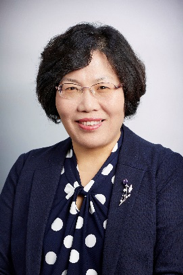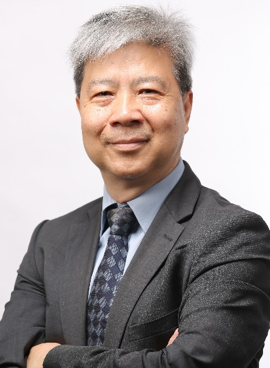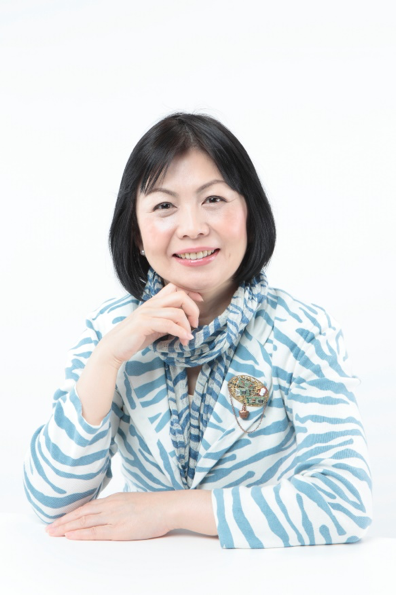
Li CHEN
Vice President, Beijing Normal University (Beijing, China)
Professor, School of Educational Technology, Beijing Normal University (Beijing, China)
Executive Director, Beijing Institute for The Learning City, Beijing Normal University (Beijing, China)
The Trend of Education Innovation by Disruptive Technology in Mainland China
Disruptive technology is challenging traditional education management and education service way as changing pedagogy in teaching and learning. This speech presents how typical education innovations driven by disruptive technology is improving education, and reveals how traditional education system hinders application of disruptive technology in education. The speech is based on a comprehensive study, aimed to provide policy-level suggestions on how to rebuild education system, supporting innovative education practice by disruptive technology. The study adopted ethnography as methodology with case study as the main method. With analysis model of three dimensions - teaching and learning, education management, and education service, the research team chose over a hundred innovative education cases influenced by disruptive technology in mainland China. The research team find out how education innovation cases improve the education, and what kinds of features of system can breed and support effective education innovation by interviewing innovators and collecting evidences. At the end of the study, the research team found out that traditional school system is not suitable for education in knowledge Economy era. Now education system is integrating into society. It is significant that we have to rebuild a new system to support personalized learning, refined management and social participation.
Biography:
Professor Chen is a vice president of Beijing Normal University and the executive director of Beijing Institute for The Learning City at Beijing Normal University. She is the president of Society of International Chinese in Educational Technology (SICET) and the president of China Association for ICT in Education for K12.
Prof. Chen is the leader of master program and PhD program of Distance Education in Beijing Normal University. She is in charge of the course The Foundation of Distance Education for undergraduate student in educational technology.
Her research is mainly focusing on interaction principle in distance education and policy research in lifelong learning. She is deeply engaged in policy consulting in distance education and lifelong learning. She has authored and published more than 10 books and 100 papers.

Siu Cheung KONG
Professor, Department of Mathematics and Information Technology, The Education University of Hong Kong (Hong Kong, China)
Director, Centre for Learning, Teaching and Technology, The Education University of Hong Kong (Hong Kong, China)
Visualizing Student Learning Progression Pattern Using Neural Network and Hierarchical Clustering Analysis
Motivating students to learn and continuous improvement of course materials are necessary and vital for the benefits of the students who participate in online courses. It is crucial to provide guidance on how to effectively use the course materials. This study aims to develop a method to identify progression patterns among students who successfully completed the course. This can help students to navigate through the course and instructors to understand more on how to organize the course materials. Traditional mining techniques such as prefix span can mine student’s platform usage patterns, yet, they do not provide a complete learning progression sequence of how course materials are related to one another. To collectively identify the learning progression pattern of successful candidates, this study proposes a descriptive model using a neural network with hierarchical clustering method. We fragment the learning path of successors into triplets and use a neural network to learn their inter-relationship in an unsupervised manner. The inter-relationship can then be visualized through fixing pre-test as the start point of the sequence to post-test as the endpoint based on the hierarchical clustering results. We have applied this technique to 3 classes of students in a statistics course. The learning sequence of successful learners revealed by the proposed method are similar across cohorts.
Biography:
Professor Kong currently is Professor of the Department of Mathematics and Information Technology (MIT); and Director of Centre for Learning, Teaching and Technology (LTTC), the Education University of Hong Kong. Prof. Kong holds a doctorate from the Department of Computer Science of the City University of Hong Kong. His research interests include pedagogy in the digital classroom (including information literacy education and IT in science and inquiry-based learning), policy on technology-transformed education and the professional development of teacher for learner-centered learning in seamless learning environments, IT in mathematics education, programming for computational thinking development, and computational thinking education.
Prof. Kong has produced over 250 academic publications in his research areas. He has completed/conducted 75 research projects since joining the University (the then Hong Kong Institute of Education). Prof. Kong currently is the Editor-in-Chief of the international journal Research and Practice in Technology Enhanced Learning (RPTEL) and Journal of Computers in Education (JCE). Prof. Kong was the President of the Asia-Pacific Society for Computers in Education (APSCE) from January 2014 to December 2015. He was also the Convener of Theory and Practice of Pedagogical Design for Learning in Digital Classrooms International Research Network (IRN) under World Educational Research Association (WERA) from December 2012 to December 2015. He is serving as the Principal Investigator of the Four-Year Project “Computational Thinking and Coding Education” in K-12 from April 2016 to April 2020.

Noyuri MIMA
Professor, Faculty of Systems Information Science, Future University Hakodate (Hakodate, Japan)
The Challenge for Higher Education Reform in Japan by Seven Samurai
In June 1996, seven researchers in their mid-thirties, who were computer related scientists, were gathered and entrusted to make a new university from scratch. As a result, the learning environment to be introduced in this keynote was developed, and the school building was awarded the Architectural Institute of Japan Prize. The philosophy behind the university's spirit became "Open space, Open mind."
There was a lot of turbulence in the process of creating a new university. Many dark clouds were disturbing us. The way to create a university was very steep and required us to overcome many obstacles. Finally though our university evolved through innovation and foresight that never comes from a plan prepared by a think tank specializing in the creation of a university. I believe we became the "Seven Samurai" in Higher Education reform in Japan.
The first thing we did when we started designing the university was to ask ourselves about the meaning of learning. What is learning? No matter how much we teach, people may not necessarily learn. "Learning" is a different issue from "teaching." We started rethinking about learning.
In this keynote I will give an autobiographical account of our unique university that has been designed and implemented from scratch and, of course, is still in operation. The focus is not only to look back at past developments, but also to extract essences and principles for designing sustainable learning environments. I will discuss the design of the learning environment as a whole, and argue that the challenge of effective design should be expanded from the conventional blend of real and digital classroom environments to a new perspective that coordinates space, activity and community.
Biography:
Professor Mima studied computer science at the University of Electro-Communications (UEC), education at the Harvard Graduate School of Education, Harvard University, and cognitive psychology at the Graduate School of Education, the University of Tokyo. She earned the Ph.D. from UEC.
Prof. Mima was a member of planning committee of Future University Hakodate and National Museum of Emerging Science and Innovation (Miraikan). After the foundation of those, she became a professor at the university (2000 - present) and a deputy director at the museum (2003- 2006). In 2008, Prof. Mima established Science Support Hakodate, a voluntary association for promoting science communication and developing science literacy of citizens. She also established Hakodate Herb Study Group for developing regional brand products by enhancing industry-academia-government-citizen collaboration in 2010. In 2013, Prof. Mima was appointed as a member of the governors of NHK (Japan Broadcasting Corporation) for three years. The governors are approved by both houses of the Diet on behalf of the people of Japan and are appointed by the Prime Minister. She is also member of several government councils related to education, science and technology, and trustee of Nissan Global Foundation. Prof. Mima was awarded the Science and Technology Prize 2014 of the Commendation for Science and Technology by the Minister of Education, Culture, Sports, Science and Technology.
Her research has focused on promoting human resources, communication, and networking from a wide range of knowledge and experience in computer, education, and cognitive science.

Jayshiro TASHIRO
PhD, BA, BSN, RN
Education Technology Coach and Instructor, Pima Community College Adult Basic Education for College and Career Readiness (Tucson, Arizona, USA)
Associate Graduate Faculty in Information Technology Security and Computer Science, University of Ontario Institute of Technology (Oshawa, Ontario, Canada)
Models of Blended Learning for Two Critical Populations—Adults Requiring Patient Education and Adults Retraining for Career Re-entry
For the past two decades, we have studied the emergence of educational technologies, courseware, and learning management systems within American K-12, undergraduate, graduate, and professional development programs. Our approach focused on perspectives grounded in theories of cognition and learning as well as in behavioral change. However, while technologies and systems facilitating blended learning have been implemented, we still have much to learn and, perhaps more importantly, there are critical adult populations that remain underserved by educational outreach. We have observed increased focus on education of two critical populations in the United States: (1) adult patients, especially those with chronic illnesses that consume the major portion of healthcare resources; and (2) adults with education at or below a high school level who have difficulty finding employment during shifts in global economic patterns demanding higher-level skills for technology-oriented jobs.
In this keynote, we will present models of blended learning that have at least some evidence base for improving educational outcomes. These models can be mapped to different types of educational levels and programs, with a particular focus on how blended learning could improve both patient and adult basic education. Our approach involves an analysis focused on cognition and learning. This approach reflects how and why different models for blended learning should be adapted for individuals at different developmental stages. For example, how do we create blended learning models that best suit elementary and secondary level school children, which are appropriate for undergraduate students, which for graduate students, and which are most likely to succeed with different types of adult learners for improved health care, professional development, or career re-entry? In closing, we will present a set of recommendations for how and why to develop new models of blended learning that integrate educational technologies in a sensible and evidence-based manner.
Biography:
Professor Tashiro received the BA from Kenyon College (Gambier, OH, USA) in 1973, with majors in Biology and Chemistry. He earned the Ph.D. from Syracuse University (Syracuse, NY, USA) in 1980, with an emphasis in Physiology and Biostatistics. At the age of 48, he gave up a tenured chair at Northern Arizona University and went back to school to study nursing, earning the BSN from Northern Arizona University in 1999 (Flagstaff, AZ, USA).
Prof. Tashiro has been a faculty member at Kenyon College (1980-1987), Bard College (1987-1990), Northern Arizona University (1990-2000), and CEO of an R&D company—Wolfsong Informatics, LLC (2000-Present). From 2005-2010, he served as a Full Professor in the Faculty of Health Sciences at University of Ontario Institute of Technology (UOIT), but then retired from the university to develop five research and development companies in Hong Kong and the United States (2010-2016). For research partnerships, he maintains a role as Associate Graduate Faculty in the School of Graduate and Postdoctoral Studies, University of Ontario Institute of Technology (Oshawa, ON, Canada). In 2016, Prof. Tashiro became a faculty member and Education Technology Coach in the Pima Community College Adult Basic Education for College and Career Readiness.
His research has focused on the relationships between evidence-based learning and evidence-based practice in education, with total extramural funding for research and development grants now more than USD $20.6 million. At UOIT, he helped develop and implement the Heath Education Technology Research Unit, the Health Information Management Program, and Graduate Program in the Faculty of Health Sciences. Tashiro also built and evaluated courses and educational simulations that promote interprofessional collaborative patient-centered care. Recent work in Hong Kong and the United States led to the Maxit Education Systems hardware-software platform that provides new types of assessments of learning-skills outcomes at all levels of education. A particular emphasis has been development of teaching-learning-assessment systems that can track and analyze misconception development during learning. From 2000 to Present, Prof. Tashiro and his colleagues have developed suites of virtual clinical simulations that monitor learners’ choices during treatment of complex patients within the simulations. The principal focus of the monitoring system has been assessment of clinical judgment, with the software conducting automated analyses of choices made by the learner while working within a simulation.